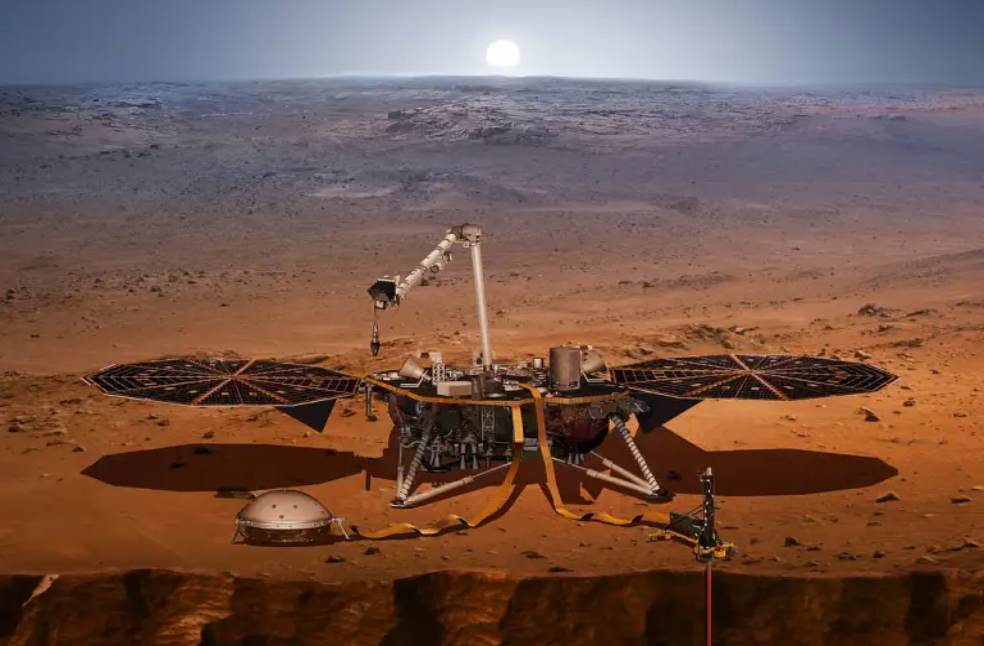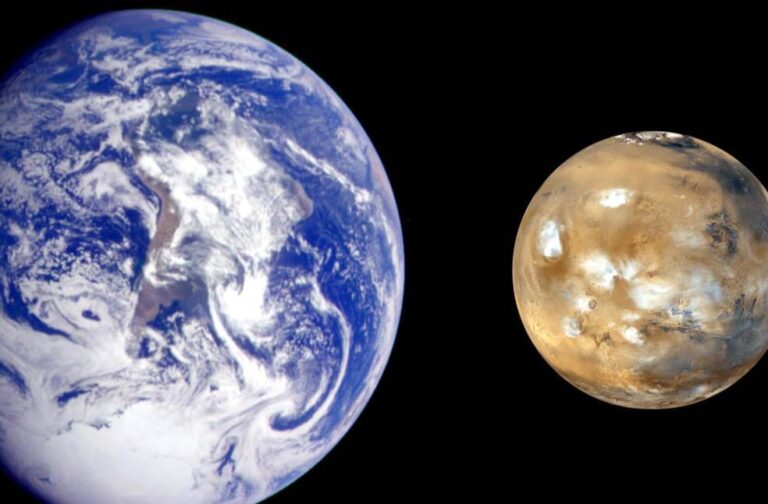Washington: Science experts suggests that Mars may harbour a substantial amount of water, potentially enough to form an ocean, trapped within the fractures and crevices of subsurface rocks. These conclusions were drawn from seismic data collected by NASA’s Mars InSight lander, which shut down two years ago after detecting over 1,300 earthquakes.
Using a combination of computer modelling and InSight data, including quake velocity, scientists determined that subsurface water was the most likely cause of the detected seismic signals. Their study was published on Monday in the Proceedings of the National Academy of Sciences.
Lead researcher Vashan Wright from the Scripps Institution of Oceanography at the University of California San Diego suggests that the water, located 11.5 to 20 kilometres beneath Mars’ surface, likely accumulated billions of years ago when the planet had a watery past, featuring rivers, lakes, and possibly even oceans.
Wright commented, “On Earth, we know that where it is wet enough and there are enough sources of energy, there is microbial life very deep in Earth’s subsurface. The ingredients for life as we know it exist in the Martian subsurface, if these interpretations are correct.”
The paper’s other authors are Michael Manga from the University of California, Berkeley, and Matthias Morzfeld from the Scripps Institution of Oceanography.

NASA’s inaugural mission to investigate Mars’ interior and examine beneath its surface was called InSight Lander, or Interior Exploration using Seismic Investigations, Geodesy and Heat Transport.
Wright said that, “If InSight’s location at Elysium Planitia, close to Mars’ equator, is indicative of the rest of the red planet, there would be enough subsurface water to fill a global ocean 1-2 km deep.” Drills and other tools would be needed to verify the water’s existence and look for any possible indicators of microbial life.
Researchers have been examining the data collected by the lander to learn more about the innards of Mars. Mars was formerly almost entirely covered in water, but it is believed that as its atmosphere grew thinner, the planet lost its surface water and became the arid, dusty place it is today. This occurred over 3 billion years ago. A large portion of this old water may have gone into space or stayed underground, according to scientific theories.



